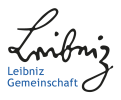ROMARA
The ROMARA (ROcket-borne MAss spectrometer for Research in the Atmosphere) is based on the development by Prof. em. Frank Arnold from Max-Planck-Institut für Kernphysik in Heidelberg (Arnold et al., 1977). The original principle to separate the ions depending on their mass goes back to works of Wolfgang Paul (Paul and Raether, 1955). The instrument consists of a vacuum chamber cooled by liquid neon to maintain a pressure inside the chamber of below 1e-4 mbar. Particles penetrate to the chamber through a small aperture placed on the axial symmetry axis of the payload ram deck, which is exposed to the atmosphere. The core of the instrument is the quadruple electrodes inside the chamber supplied with high frequency alternating voltage. Depending on the mass of present ions, their trajectories through the electrodes will either become unstable and the ions collide with the electrodes, or they will pass onto a detector. The ROMARA can measure positive or negative ions with masses up to 2000 amu and with an altitude resolution of 2 km.
Contact
-
Dr. Boris Strelnikov
+49 (0) 38293 68 109
Cooperation
Ludwig Maximilians University, Munich
DLR-Institute of Atmospheric Physics, Oberpfaffenhofen
Germany












